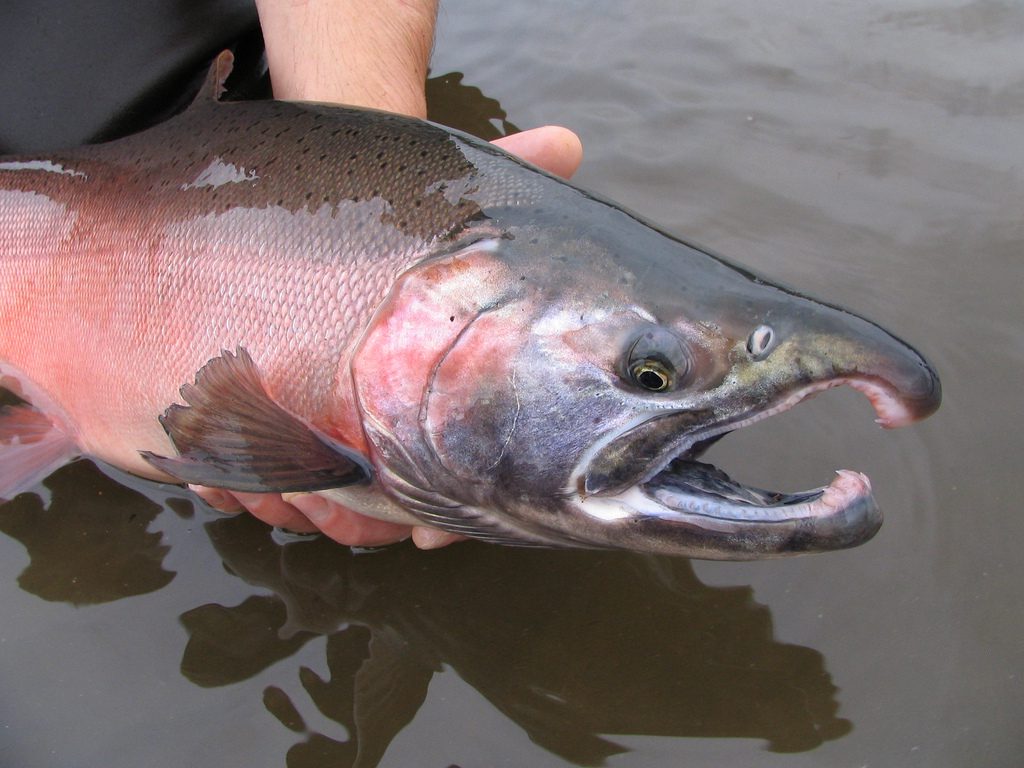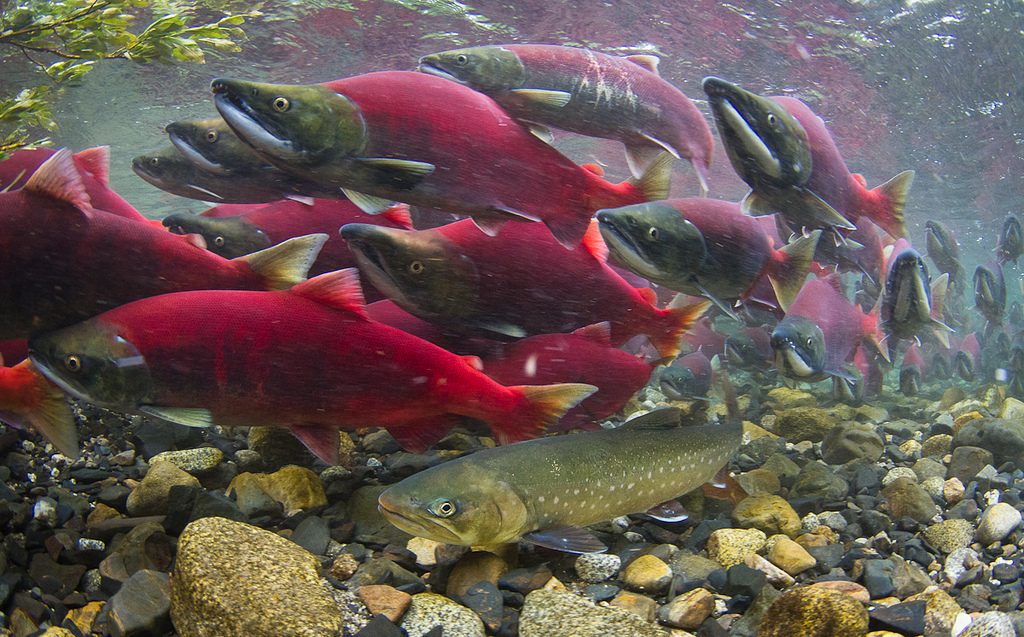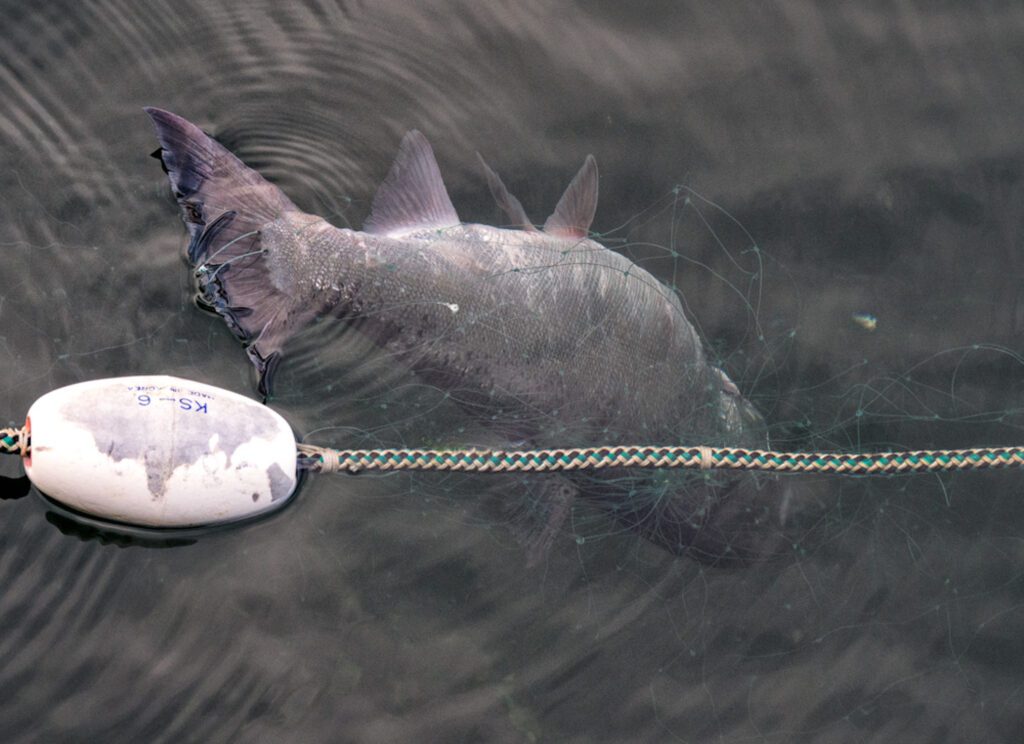King and chum salmon are still slowly building a run up the Yukon this summer—and fishermen are contending with everything from gear restrictions to wildland fires in their efforts to fill their racks.
During the weekly teleconference with fishermen and managers from the state and federal level in U.S. and Canada—organized by the nonprofit Yukon River Drainage Fisheries Association—fisherman all along the river say Alaska’s intense fire season is definitely hampering their season—turning an afternoon boating on the river into choking day in a smoke-filled oven.
Norma in Marshall said the local “firefighters are still out at the Card Street Fire [near the Kenai Peninsula community of Sterling], so a lot of our subsistence activities were lower than in previous weeks.”
Fred Huntington in Galena said “lots of forest fires” were likewise impacting fishing in his community.
While the fires may have hindered fishing, they haven’t stopped the fish. The first pulse of Chinook entered the river in early June, and is now as far upriver as Koyukuk, but overall the numbers remain low: roughly 13,000 fewer kings have passed the Pilot Station Sonar project near the river’s mouth when compared to this time last year.
It’s a different story for summer chums: they also began running just a week into June, and now two pulses have made it as far upriver as Holy Cross. Compared to last year, there are nearly 20,000 more chums in the water now.
Even with hundreds of thousands of chums swimming alongside thousands of Chinook, runs are still just average, and that means gear is still limited to dipnets, beach seines, and the occasional live-release fish wheel. An unfamiliar tool for many on the Yukon, dipnets have been for the most part ineffective—and many fishermen hoping to user smaller 4-inch mesh nets say they simply can’t get that gear in their communities. That’s turned what should be a busy summer along the river into a slow and frustrating season with little fishing.
Sven in St. Mary’s said “reports are people haven’t been able to get most of their, or a lot of their, subsistence needs done.”
Martin in Pilot Station said “very little subsistence activity [is happening in the community]. Most racks along the riverfront have a few salmon hanging, we should be usually with hanging and drying salmon in Pilot.”
Ken Chase in Anvik said “subsistence fishing for salmon right now is just about nil, there’s no one out fishing.”
Bill Alstrom in St. Mary’s added that the “dipnet fishing, for subsistence … it just ain’t workin’ out.”
While subsistence has been slow, commercial chum fishing was open in the lower river with dipnets and beach seine gear. As of Sunday, commercial fishermen harvested almost 62,000 chums and released over 3,000 Chinooks.
Sven in St. Mary’s told Fisheries Managers the the gear limits—and overlap with commercial fishing—should be reason enough to allow for a ‘round-the-clock opening for subsistence.
“Since we are doing subsistence and commercial at the same time, what are the chances having subsistence going 24/7?” he asked. “With the little amount of fish in the river, and people still have to meet their subsistence needs, I imagine it should give them more chance for subsistence opportunities, for these fishermen here, just to give folks a chance to have their subsistence needs taken care of.”
Alaska Department of Fish and Game managers said that’s not likely, as they already hold subsistence-only openings in the mornings prior to the subsistence and commercial openings in the afternoon and evening. They said openings may happen for subsistence-only fishing in the lower river, but for now, limited chum salmon openings continue. New openings near Ruby and Galena are expected later this week, and like the lower river, only dipnets, beach seines, and fish wheels will be allowed.
Stephanie Schmidt—the Summer Season Fishery Manager along the Yukon for Fish and Game—said strong winds were pushing more fish into the mouth of the Yukon, and test catches near the mouth early Tuesday saw large numbers of both species. She hoped that will mean more fish upriver, and more chances for subsistence users to finally start putting away enough of them for the winter.
“You know, one day makes all the difference,” Schmidt said. “It now looks as though we’ve got a really, really good group of both summer chum and Chinook salmon moving into the river currently … And we’re going to try and get folks fishing on those summer chum salmon when they’re there in abundance and there’s relatively low numbers of Chinook salmon.”
But what does the goal of protecting kings really mean for people living along the river?
One fishermen admitted on the teleconference—with a mix of pride and remorse—to sharing a small feast of just one prized Chinook with his fellow elders in his community, saying the group of five “ate that king salmon, kind of like a ceremonial prayer”—likely the only king salmon they’d harvest this season, he added.
For Janet in Rampart, that spiritual connection to the Chinook is what’s being lost with the king closures, and it’s something she fears will be lost to new generations if they can’t harvest the sacred fish.
“We’ve been doing due diligence of trying to preserve the king salmon,” she began. “And we keep saying ‘for our grandchildren,’ but when you think about it, our grandchildren are not even getting … or we’re depriving them of eating king salmon … of the taste of such a wonderful food … then how are they even going to know?”
“Yep, and the lifestyle that comes with it?!” another caller asked emphatically.
“And how are they going to know how to fish, or cut fish?” a third asked.
If the tight conservation on kings continues, Schmidt said they’ll be on track to meet escapement goals for Chinook this year. That could mean very limited openings for incidental take of kings. That’ll help fishermen meet subsistence needs without a significant impact to the Chinook population, Schmidt said, but she emphasized no final decisions have been made.







